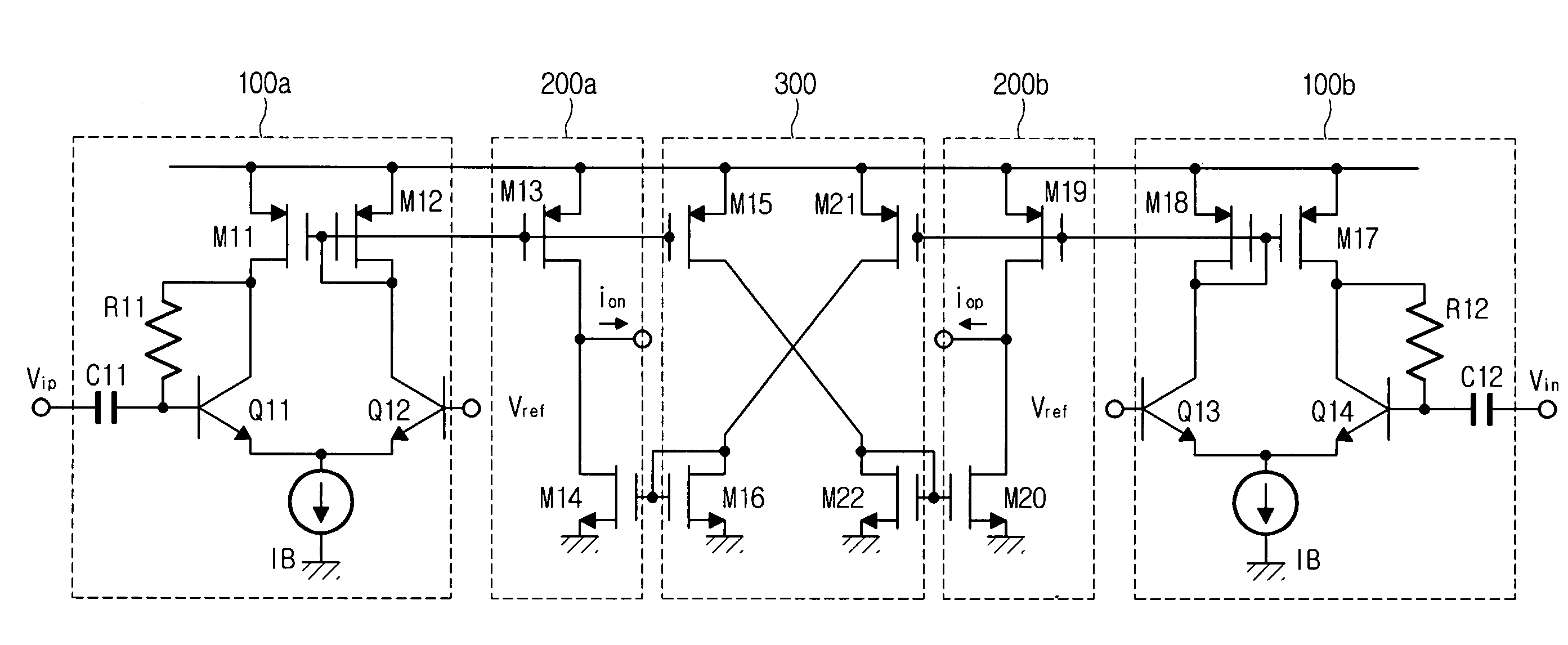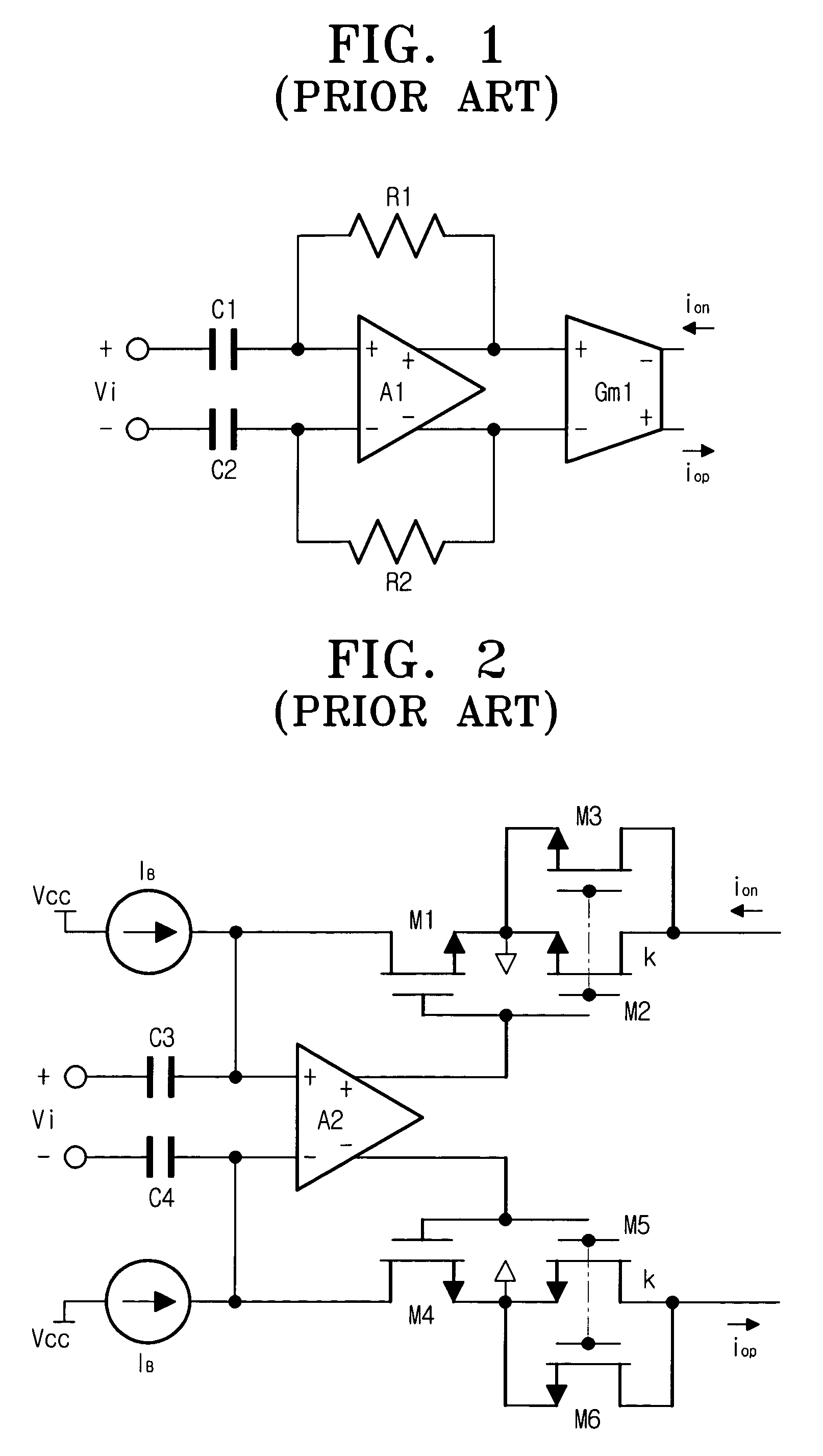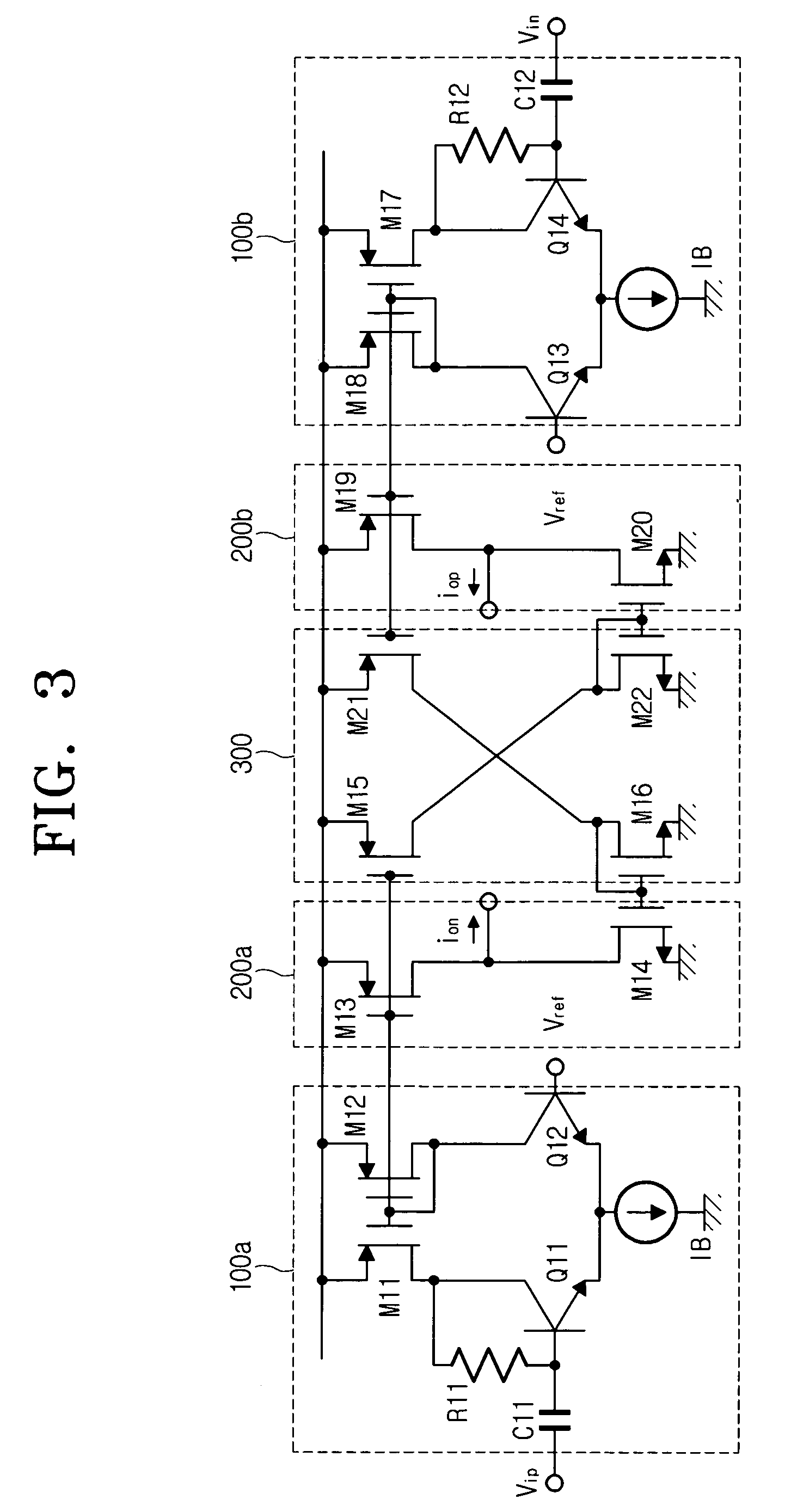Boosting circuit
- Summary
- Abstract
- Description
- Claims
- Application Information
AI Technical Summary
Benefits of technology
Problems solved by technology
Method used
Image
Examples
Embodiment Construction
[0025]Hereinafter, the present invention will be described in detail with reference to the accompanying drawings.
[0026]FIG. 3 is a view for showing a boosting circuit according to an embodiment of the present invention. The boosting circuit is structured with input circuit parts 100a and 100b, output circuit parts 200a and 200b, and a bias circuit part 300.
[0027]The input circuit parts 100a and 100b each outputs a differential current proportional to a differentiation of an input voltage. The bias circuit part 300 mirrors currents outputted from the input circuit parts 100a and 100b in order to reflect signals in the push-pull form, and produces inverted mirror currents. The output circuit parts 200a and 200b determine the magnitudes of the currents outputted from the input circuit parts 100a and 100b, and the bias circuit part 300 based on a size ratio of MOS transistors M13 and M15, that is, a ratio, k, of Width value(W) / Length value(L), add and output the magnitudes in the push-p...
PUM
 Login to View More
Login to View More Abstract
Description
Claims
Application Information
 Login to View More
Login to View More - R&D
- Intellectual Property
- Life Sciences
- Materials
- Tech Scout
- Unparalleled Data Quality
- Higher Quality Content
- 60% Fewer Hallucinations
Browse by: Latest US Patents, China's latest patents, Technical Efficacy Thesaurus, Application Domain, Technology Topic, Popular Technical Reports.
© 2025 PatSnap. All rights reserved.Legal|Privacy policy|Modern Slavery Act Transparency Statement|Sitemap|About US| Contact US: help@patsnap.com



